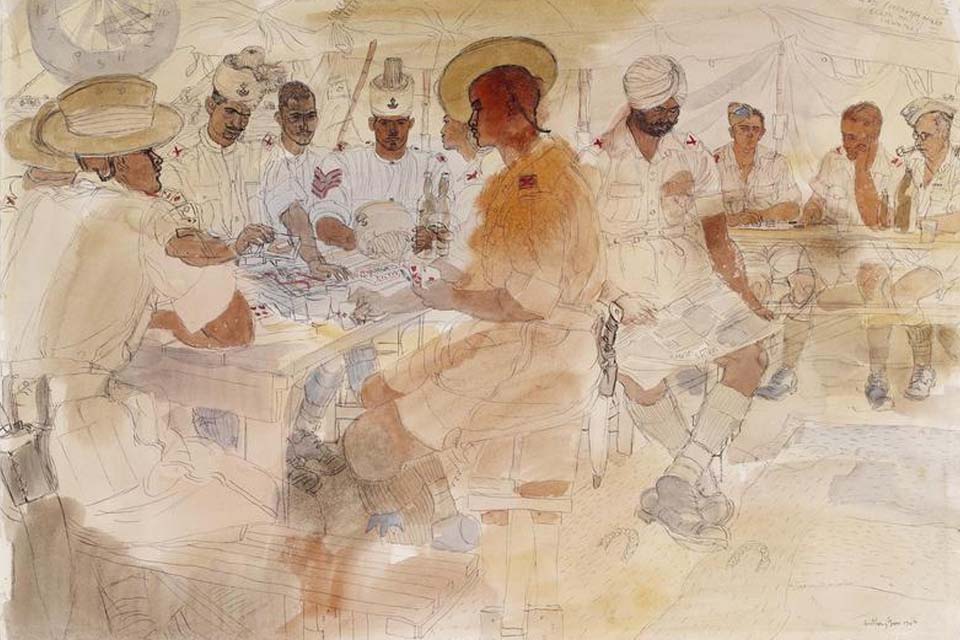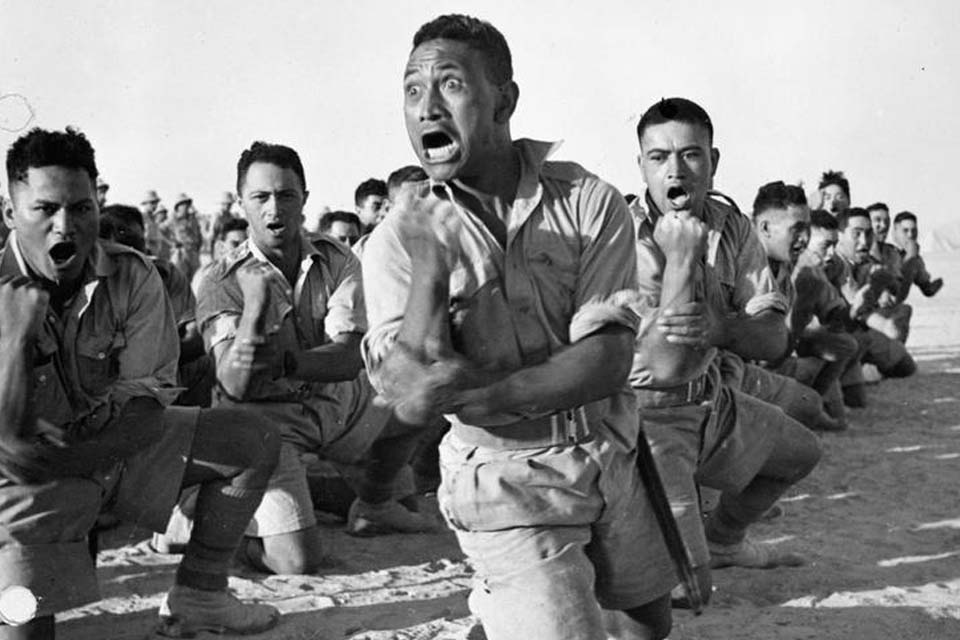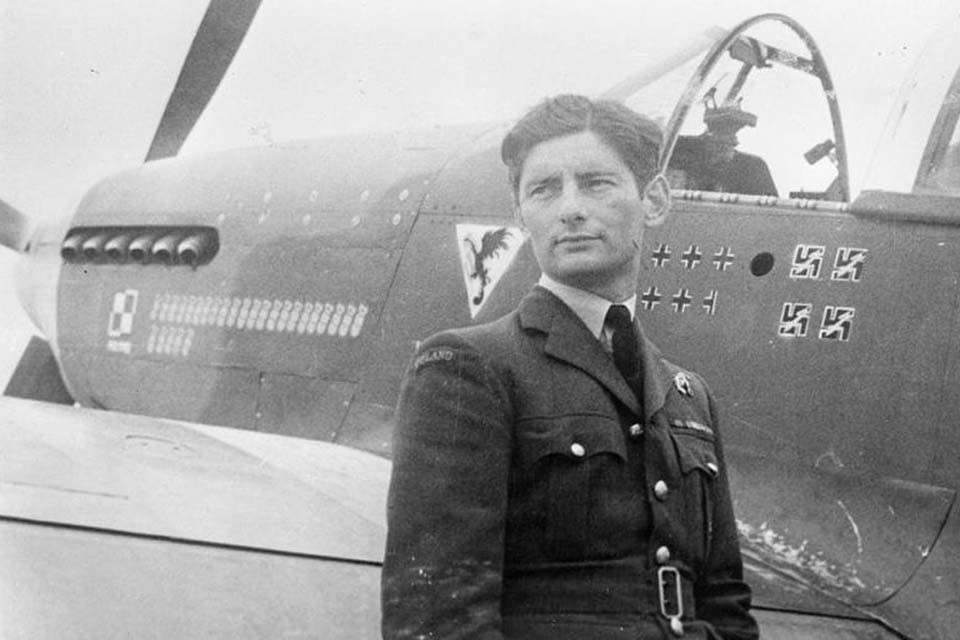A look at the role of troops from the British Empire, Dominions and foreign nationals in the UK Armed Forces during the Second World War.
Forces from across the British Commonwealth of Nations - then the British Empire and Dominions were involved in the European conflict of the Second World War, as well as serving on the Home Front working in munitions factories and as forestry workers. In addition these countries also supplied raw materials and goods to Britain, helping in the manufacture of vehicles for the war effort.
The British Empire fell into two distinct parts: the self-governing Dominions - Australia, Canada, New Zealand and South Africa, and those colonies that were wholly or partly governed from London, including the Indian subcontinent, which had its own ‘Viceroy’ or ruler, as well as the West Indies.
British Empire and Dominions forces
During the Second World War the Empire and Dominions raised a total of 8,586,000 men for military service. Aside from 5 million from the British Isles, 1,440,500 came from the Indian subcontinent, 629,000 from Canada, 413,000 from Australia, 136,000 from South Africa, 128,500 from New Zealand and more than 134,000 from other colonies. Of these groups nearly all fought in the conflict in Europe.
Over two and a half million men from the Indian subcontinent volunteered for service, producing the largest volunteer army in history. At the beginning of the war, in 1939 and 1940, there were Indian mule companies with the British Expeditionary Force in France. Indian soldiers also served in North Africa, Italy and Greece, in particular the 4th Indian Division played a vital role at the Battle of El Alamein in October 1942, and at the Battle of Monte Cassino between January and May 1944. The Royal Indian Navy fought in the North Atlantic and the Mediterranean, and around 40,000 Indians served in the British Merchant Navy.

Troops from the Dominions fought in all theatres where British troops were engaged. Canada was the site of the first British Commonwealth Air Training Scheme flying school, where many pilots were trained. Men from the Dominion air forces - Australian, Canadian, New Zealand and South African - were incorporated into the Royal Air Force (RAF), where they went on to join Bomber Command with some fighting in the Battle of Britain in the summer of 1940.
Between 1940 and 1943, Royal Australian Air Force (RAAF) personnel participated in the air war against the Germans and Italians in North Africa and the Middle East, in the defence of Malta in 1942, in the Allied drive through Sicily and Italy between 1943 and 1945, and in the skies over the UK, Europe and Britain’s sea lanes from 1939 until 1945. RAAF personnel were especially notable in RAF Bomber Command: although they represented only 2 per cent of all RAAF personnel during the war, they accounted for 23% of the total number killed in action. Two airmen who flew in the RAAF in over 30 missions over Europe were brothers Murray and Eric Maxton from Western Australia. They were the only brothers to fly combat missions in the same aircraft during the war.
The Royal Canadian Navy made a significant contribution to Allied victory in the Battle of the Atlantic, providing escorts for convoys crossing between Canada and Britain. The most important measure of its success was the safe passage during the war of over 25,000 merchant ships under Canadian escort. These cargo vessels delivered nearly 165 million tons of supplies to Britain and to the Allied forces that liberated Europe. Proportionally, Canadian Merchant Seamen suffered much more heavily, losing one in ten killed among the 12,000 who served in Canadian and Allied merchant vessels. By the end of the war Canada had the third largest Allied navy and the fourth largest Allied air force.
The 28th (Māori) Battalion was part of the 2nd New Zealand (NZ) Division and earned a formidable reputation as a fighting force during the Greek, North African and Italian campaigns. In the words of Lieutenant-General Bernard Freyberg, who commanded the 2nd NZ Division:
no infantry battalion had a more distinguished record, or saw more fighting, or, alas, had such heavy casualties as the Maori Battalion.

In the West Indies thousands of men volunteered for service with 5,500 West Indian RAF personnel coming to Britain during 1944-1945. This included seven Distinguished Service Orders (DSO), and 64 Distinguished Flying Crosses (DFC). Some 300 or so West Indians served as aircrew, and some 90 men received decorations. Probably the most decorated was Squadron Leader Ulric Cross, who was awarded both the DSO and the DFC, his citation noted his ‘exceptional navigational ability’ and the ‘very large number of sorties’ he had flown ‘against heavily defended targets’ in Germany.
From 1944, West Indian women served in the Women’s Auxiliary Air Force (WAAF) and the Auxiliary Territorial Service (ATS) in Britain. One woman who joined the WAAF was Lilian Bader, one of the first black women to join the UK Armed Forces. Bader trained as an instrument repairer, became a Leading Aircraftwoman and gained the rank of Acting Corporal. In 1989 Bader published her memoir Together – Lilian Bader: Wartime Memoirs of a WAAF 1939-1944.

Foreign nationals in the UK Armed Forces
Men and women from countries occupied by the Nazis escaped to Britain to serve alongside the RAF, the Royal Navy and the British Army. Poland contributed the largest number of service personnel, and there were also army, navy and air force contingents from Belgium, Czechoslovakia, France, Holland, Luxembourg and Norway. Danes also served in UK forces, and Greeks and Yugoslavs fought in the Middle East and Mediterranean. It is estimated that 38,544 men from Eire (now the Republic of Ireland) joined the British forces and nearly 200,000 Irish men and women worked in Britain’s war industries.
Four Czechoslovakian squadrons flew with the RAF and took part in the Battle of Britain and the Normandy Landings. One Czech pilot, Vladimir Nedved, joined the RAF Volunteer Reserve in June 1940 and trained as a navigator before joining No. 311 (Czech) Squadron. He was later appointed a Member of the Order of the British Empire for gallantry after a flight over Germany. A Czech armoured brigade also served in the Normandy campaign in 1944.

The men of the Polish Air Force who had managed to escape to Britain were subordinated to RAF command. Their fighter pilots played an outstanding role in the Battle of Britain and also provided bomber crews for Bomber Command. Squadron Leader Eugeniusz Horbaczewski, Commander of No. 315 (Polish) Squadron, was credited with destroying 16 enemy aircraft before being killed in action on 18th August 1944. He was awarded several decorations including the Distinguished Service Order (posthumously) and Distinguished Flying Cross and Bar (twice).

Air Chief Marshal Sir Hugh Dowding, who led Fighter Command, would later write:
Had it not been for the magnificent material contributed by the Polish squadrons and their unsurpassed gallantry, I hesitate to say that the outcome of the Battle would have been the same.
By the end of the war there were 15 operational Polish squadrons. Polish troops also fought with the British army in North Africa and Italy, where they played a pivotal roll at the Battle of Monte Cassino, and in northwest Europe.
In tribute to the contribution made to our defence by military and civilian personnel from what was then the British Empire and later the Commonwealth and whose descendants now form part of the richly diverse ethnic population in the United Kingdom. The ‘We Were There’ campaign highlighted the contribution of ethnic minorities in the Armed Forces over the last 200 years.
VE Day: 70 years on
You can celebrate the achievements of those who fought in the Second World at the VE Day 70 celebrations on 8 to 10 May. Visit www.gov.uk/VEDay70 for the latest news about VE Day 70 years on and details of national and local celebrations across the UK.